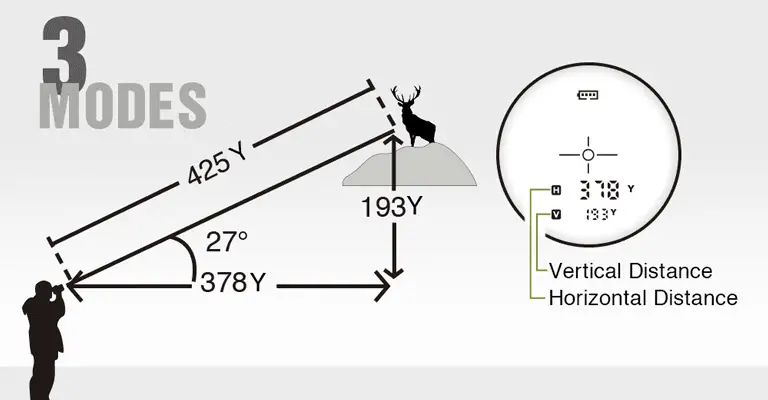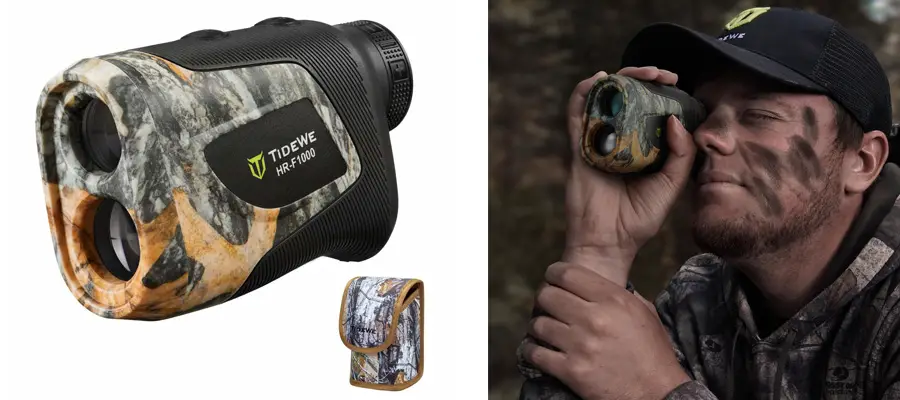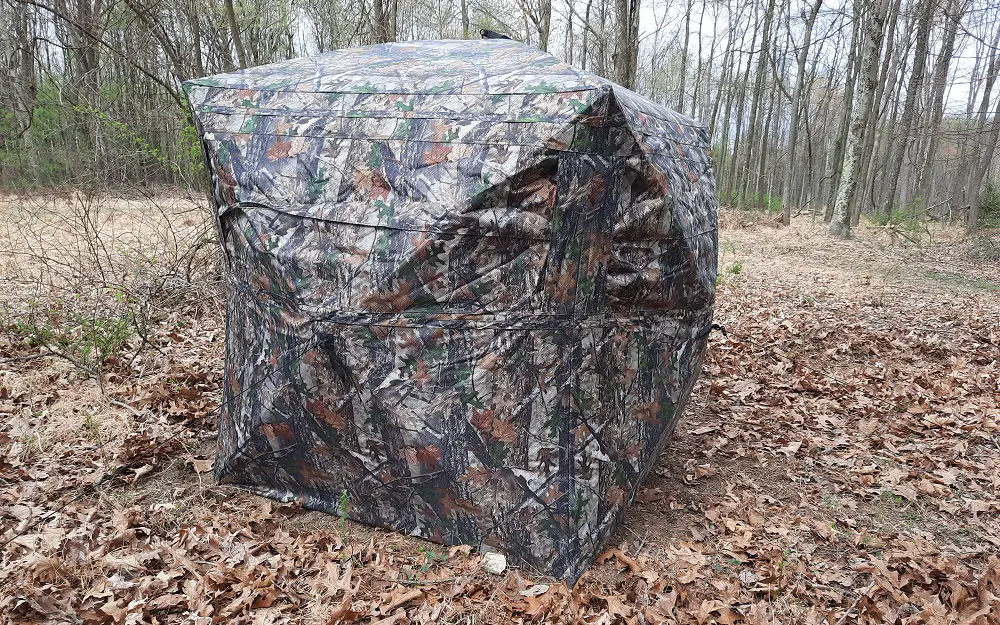Disclaimer: I bought the TideWe Range Finder with my own money. Though TideWe has sent me other gear and I do earn from qualifying purchases using their links and discount code, thanks to them for their support.
Every now and then you find really high-quality piece of gear that also comes at an impressively low price point, this is the TideWe Ranger Finder, and this combination of qualities is exactly why I bought one. Sometimes gear like this does not live up to your expectations, but the TideWe Range Finder truly impressed me.
I have long used a range finder for hunting, scouting, setting up duck blinds as well as tree stands for deer, and of course making all of the test videos that I do on YouTube. It is a core part of my gear and I use it regularly under many different conditions. All that to say, I have some experience with range finders. When I discovered the TideWe Hunting Range Finder, I thought it could fill a specific niche for me and decided to test it out.
TideWe did give me an 18% discount code for my audience when I reviewed their see-through hunting blind over a year ago, so of course I took advantage of the code and used it on this purchase also. That 18% off code is GK18, you can enter it at checkout. That discount is in addition to many sales they are running, so I was able to get the range finder for about $65. Yes, I typed that correctly, a quality range finder for around $65. I will come back to that number a few times.
Why The TideWe Range Finder?
I have owned and been using a more expensive range finder for years now. I use it for scouting, hunting, etc. But I also use it measure distances to my targets when doing all the ballistics gel and pattern testing videos that I make for YouTube. I do a lot of tests so I need a quality range finder. However, I have been hesitant to take my more expensive range finder hunting on rainy days. I did not want to risk it getting damaged by the water.
When I saw the TideWe Range Finder in the $60-$70 dollar range I thought it sounded perfect to use in higher risk rainy hunting applications. As long as it was reasonably close on accuracy, it was cheap enough to not be a huge deal if I broke it. So I bought the range finder. Within five minutes of taking it out of the box I realized something very surprising. It was not every bit as good as my more expensive range finder, it was better.
Features
The TideWe Range Finder comes in a 700 yard and a 1000 yard version. I opted for the 700 yard model because it was cheaper and I don’t even own a gun that can shoot anywhere remotely close to 700 yards. That is so far away that it is essentially a fictional distance for me. So 1,000 yards doesn’t gain me a thing. If it helps you, you can pay a little more for it.
You can find all of the exact specs for the TideWe Range Finder here but the highlights include 6x magnification, +/- of 1 yard, its tiny, has nearly instantaneous measuring, has IP54 water resistance, has three different modes, and provides you the measurements to a tenth of a yard.
This thing will tell you the straight line distance to your target like just about any range finder on the market. But it will also tell you the angle, vertical distance, horizontal distance, and even the speed of your target!

So if you are an archery hunter up in a tree stand and you are aiming down, it will give you all the distance measurements you need to calculate how high you need to hold. And if you are a waterfowl hunter and you keep seeing ducks or geese speed by you can determine how fast they are flying and at at what distance so you can calculate how far you need to lead the shots.
This is huge. Yes, many other range finders on the market now do this. But this thing is $65. It may be the best equipped hunting range finder on the market for this price range that is made by a real brand. And speaking of real brands, TideWe has been cranking out some really impressive gear over the last few years. I have been very surprised at the quality of their stuff lately. Everything I have bought from them has been great quality and value.
This is an outstanding laser range finder for bow hunting and all deer hunting really, as well as turkey hunting, elk hunting, waterfowl hunting, and I’m sure alot more.
Performance
Of course the biggest question is how does the TideWe Range Finder perform? Well, I tested it head to head against my long standing, much more expensive range finder and I found the measurements to be identical. That’s right, it showed the same distances as the expensive one. And actually, it showed more precise distances.
My old range finder just gave measurements in whole yards, but this one gives it in tenths of a yards. So before I would just know something was 40 yards away. But now with the TideWe, I can know it is 40.7 yards. Does really that matter for hunting? No, not really. But for testing ammo at the range, it is a nice bonus feature.
I have hunted with this range finder on dry days and wet days, I’ve made ammo test videos with it, I’ve learned the distances of all kinds of things in my neighborhood, and so far it has performed flawlessly. In fact, I actually stopped using my older more expensive range finder for everything, even test videos. The TideWe is more precise, and because its cheaper, its less risky to take it into the field or anywhere else. All in all, I don’t know how I could be happier for $65.
Pro & Cons
The list of pros is easy to write and its hard to come up with some realistic cons. This is a great piece of gear for the money.
Pros:
- Very precise measuring, it performs above its price range
- Durable
- Compact and lightweight
- IP54 water resistant
- Measures fast
- Very well priced and goes on sale
- Rechargeable Li-ion battery
- 700-1000 yard options
- Numerous modes and features
- Measures a target’s speed and distance
- Measures vertical and straight line distance
- 30 day money back guarantee + 1 year limited warrantee
- Free shipping
Cons:
- I wish it was even more waterproof, to the point of full submersion for hours
- It would be nice if it was even smaller or flatter so it fit easier in a chest pocket of a vest, parka, or waders
Value
I don’t want to sound overly sensational here but the value is one of the biggest things going with this range finder. For $65 you get a great product from a reputable brand. I am very impressed with this piece of gear and I’m glad TideWe is here filling an important niche in the hunting gear market.
Yes there are some cheaper products out there, but gear has to be good, not just cheap. TideWe is making some really high quality stuff at very affordable prices. The more I buy, the more impressed I become.
Conclusion & Recommendation
If you are looking for your first range finder, a back up range finder, or a low cost option you can play rough with, this could be one the best options out there for you. Is it the best range finder in the world? Certainly not. But it may be the best one for $65.
If you are considering getting one, don’t forget the 18% off discount code GK18 when you order the TideWe Range Finder. I am very happy with mine and I don’t think you could go wrong with it.
Be sure to listen to The New Hunters Guide Podcast and check us out on YouTube.
Till next time. God bless you, and go get em in the woods!
George Konetes Ph.D. – Founder and Host of the New Hunters Guide.
The New Hunters Guide is simply what George wishes he would have had when learning how to hunt; a single place to get practical hands on knowledge about different kinds of hunting, gear, strategy, and tips that can improve your comfort and fun factor in the woods.


